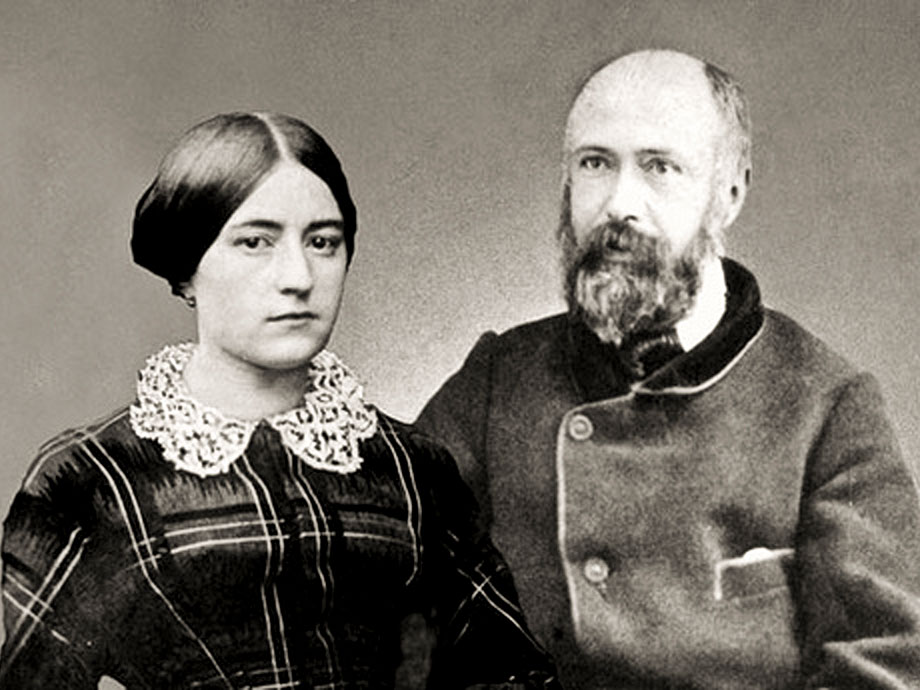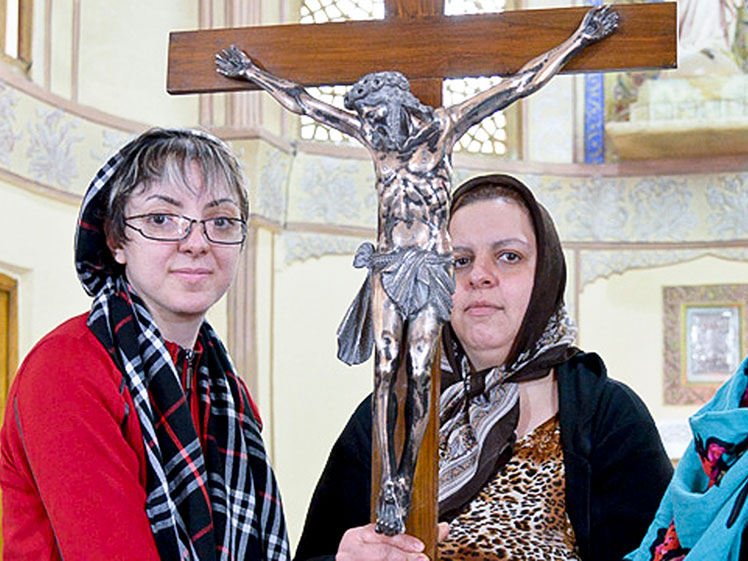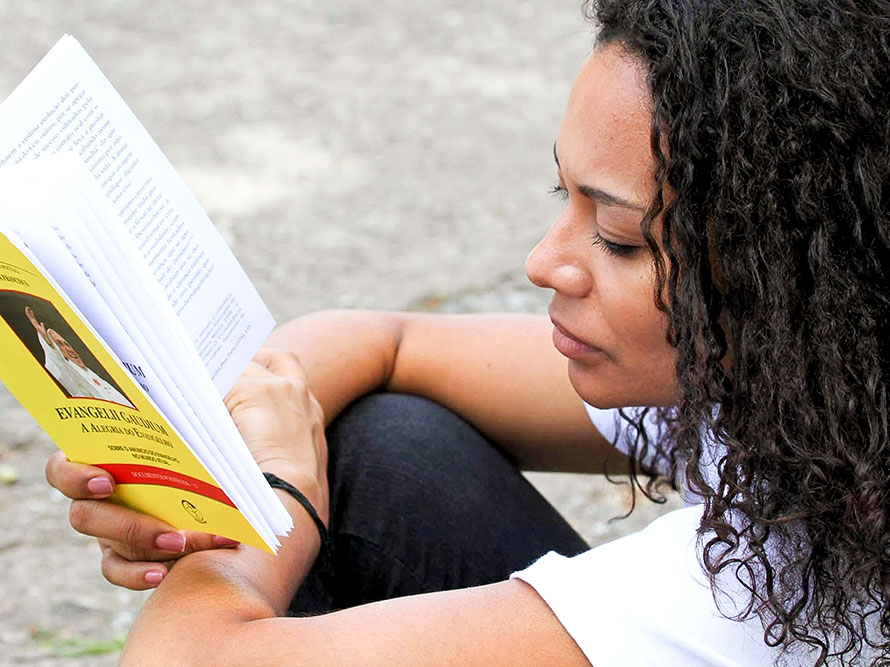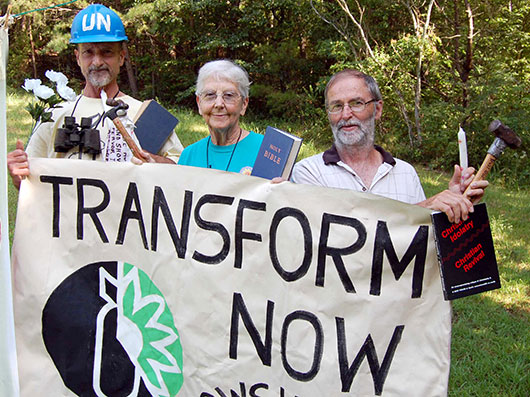Louis and Zelie Martin were declared “Venerable” on March 26, 1994 by Pope John Paul II. They were beatified on October 19, 2008, after the miraculous healing of the Italian infant Pietro Schiliro from a fatal lung malformation, was recognized by the Vatican. It was only the second time in history that a married couple was beatified, the first being Luigi and Maria Beltrame-Quattrocchi of Italy in 2001.
The cause of Blesseds Louis and Zelie Martin has progressed significantly since 2008. Another miracle on behalf of Carmen, a little Spanish girl, is under consideration. In 2011, the collection of their letters was published in English with the title, “A Call to a Deeper Love” (The family correspondence of the parents of St. Therese of the Child Jesus, 1863-1885). Only 16 letters from Louis survived, but many of Zelie’s 216 letters gave vivid details about their family life, their children, and Louis as a husband and father.
SAINTHOOD: A FAMILY PROJECT
These letters provide us with a treasure of rich insights into the lives and spirituality of these two extraordinary individuals. We are given a series of snapshots revealing the tone and texture of the lives of these two saintly, and yet, in many ways, very ordinary people. The incidents described therein, which give us access to the honesty and intimacy of their lives, were never meant for the general public. They greatly enrich our understanding of this charismatic couple who radiated holiness and brought to life the greatest saint of the modern age.
The couple underscored the fact that sainthood is a family project of parents and children immersed in the God of love. They call us to a deeper love for God, for each other, and for the poor in our midst and invite us to accept whatever the will of God may be for us in our lives, no matter how confusing and painful that may be, and to have total trust and confidence in Him.
The anguish of losing 4 of their 9 children, the economic reverses that threatened their businesses, Zelie’s losing battle with breast cancer, and the Alzheimer’s disease suffered by Louis are all brought vividly to light in these letters, as is the undying love of this model couple for one another. Louis and Zelie were immersed in the 19th century Catholic piety. No matter what the troubles, the Martins believed in God as a provident, loving Father.
A STITCHING ARTIST
The second child of Isidore and Louise-Jeanne Guerin, Zelie was born on December 23, 1831 in Gandelain, in the Orne region of France, where her father was engaged as a gendarme. In a letter addressed to her brother, she herself defined her childhood and her youth as “sad as a shroud, because, if mother spoiled you, with me, you know, she was too severe; she who was so good did not find a way with me, and so I suffered a terrible heartache.”
This education was to mark her character, the exacting way she had of living her spirituality. After her studies in the convent of the Perpetual Adoration in Alençon, she felt a religious calling. But faced with the refusal of the Mother Superior, she took on a professional course and initiated, with success, the manufacture of the famous Alençon stitch. Toward the end of 1853, she created work from home for many handworkers. Her workshop was renowned for the quality of her work. The relationship that she had with her personnel whom she said she must love as members of her own family, shows us that she was always ready to fight injustice and to support those who were in need. The Bible guided her every move.
One day, as Zelie crossed the Saint Leonard Bridge, she passed a young man with a noble face, a reserved air, and a demeanor filled with an impressive dignity. At that very moment, an interior voice whispered to her: “This is he whom I have prepared for you.” The identity of the passerby was soon revealed as Louis Martin. The two young people quickly came to appreciate and love each other. Their spiritual harmony established itself so quickly that a religious engagement sealed their mutual commitment without delay. They did not see their marriage as a normal arrangement between two middle-class families of Alençon but as a total opening to the will of God.
From the beginning, the betrothed couple placed their love under the protection of God who, in their union, would always be “the first served.” Their marriage was celebrated on July 13, 1858 in the parish of Notre Dame d’Alençon. Louis and his spouse decided, at the beginning of their marriage, to maintain perfect chastity. However, Divine Providence who leads all with “strength and gentleness,” had other views for this couple, and at the end of ten months, on the advice of a priest friend, they changed their minds. They now desired to have many children in order to raise them and offer them to the Lord.
A WATCHMAKER AND JEWELER
Louis Martin was born in Bordeaux, France, on August 22, 1823 also into a military family. He spent his early years at various French military posts. At the end of his studies in Alençon, he didn’t turn toward a military career like his father, but chose the profession of watchmaker. A man of faith and prayer, Louis, for a time, wished to enter the priesthood. In 1845, he went to the Swiss Alps to enter a Carthusian monastery, where his first task was to learn Latin. He tried to learn it but, in the end, gave up. Having finished his watchmaking studies in Rennes and Strasbourg, he returned to Alençon, where he dedicated himself to his work as a watchmaker-jeweler with diligence and honesty. Then he met and married Zelie.
Alongside this strong, tender, but undeniably domineering woman, Louis seemed to be made of much softer stuff. He was a dreamer and a romantic. He loved nature with a deep sentimental enthusiasm. From him, St. Therese inherited her passion for flowers and meadows, for her native landscape, for clouds, thunderstorms, the sea, and the stars. Louis made pilgrimages to Chartres and Lourdes, went to Germany and Austria, travelled twice to Rome and even to Constantinople and planned, but did not live to carry out, a pilgrimage to the Holy Land.
Together with this desire for adventure was an impulse towards withdrawal; at Lisieux, where he moved after his wife’s death, he arranged a little den for himself high up in the attic, a true monastic cell for praying, reading and meditation. His daughters were allowed to enter it only if they wished to converse spiritually and for self-examination. As in a monastery, he divided the day into worship, garden work, and relaxation.
As a jeweler and watchmaker, he loved the precious things he dealt with. To his daughters, he gave touching and naive pet names: Marie was his diamond, Pauline his noble pearl, Celine the bold one, and the guardian angel, and Therese, his little queen to whom all treasures belonged.
HOLY FAMILY
What a struggle it was to stay alive in the 19th century! Of the 9 children of the Martin family, 4 died in infancy or childhood. The other 5 were survivors of days and nights of worry for their parents. Zelie and Louis feared that every cold, every fever was going to take yet another child. The childhood diseases, for which there was no effective remedy in those days, took so many lives.
To lose four children at an early age, at a time when they wanted to have a son to become a priest, was very hard. But neither the bereavement nor the trials weakened their confidence in the goodness of God’s plans, and they abandoned themselves with love to His Will. The surviving children, 5 girls, will all become nuns, 4 of them in the Carmelite monastery.
The education of the children was at the same time joyful, tender, and demanding. Very early, Zelie taught them the morning offering of their hearts to the Good God, the simple acceptance of daily difficulties “to please Jesus.” The saintly parents left an indelible mark that is the basis of the little way taught by the most celebrated of their children: Therese. One cannot conceive of the growth in holiness of Therese and the religious vocations of her sisters independent of the spiritual life of Mr. and Mrs. Martin, at the heart of their vocation to family life.
One of the daughters, Celine, wrote: “In our home, character formation had, in religious piety, the main purchase point. There was a whole hearth liturgy: evening prayers in the family, month of Mary, the Sunday worship, pious reading the eve of Sunday. My mother used to take me on her knees to help me to prepare my confessions, and it was to the very confidence of her daughters that she was always directing herself.”
A WIDOWER’S CHALLENGE
At his wife’s death, Louis Martin was left alone to raise the 5 daughters. He took them to school, played games with them, made them toys, mimicked the birds, sang them old French ballads, took them to church, prayed with them, and, together, they generously served the poor. St. Therese, known for her spirituality of the “little way” (showing great love in all the small matters of daily life), was schooled in that spirituality right in her own home and family life.
She wrote: “When the preacher was speaking about Saint Teresa of Avila, my dad used to bend towards me and whisper: ‘Listen carefully, my little queen, he is speaking of your patron saint.” I really listened but often I used to look at my dad more than at the preacher; his beautiful countenance was telling me so much! How many times I saw his eyes fill up with tears which he, in vain, tried to contain…” In one of her letters to her father, Saint Therese also wrote: “When I think of you, I naturally remember our Good God.”
But the most admirable work of this father was the offering to God of all his daughters and then of himself. In his unshakable submission to the will of God, like Abraham, he placed no obstacle to these vocations and considered the offering of his children to the Lord as a very special grace granted to his family.
Shortly after the entry of Therese into the Carmel, Louis told his daughters that, at the Church of Notre Dame of Alençon, he was reconsidering his life: “My God, I am too happy. It’s not possible to go to heaven like that. I want to suffer something for you.” “And,” he added, “I offer myself.” Louis didn’t dare pronounce the word “victim,” but his daughters understood. This confidence really touched Therese, who, several years later, offered herself as a victim to the Merciful Love of God.
The last years of the life of Mr. Martin, “the patriarch,” as he was affectionately called by those close to him, were marked by several health problems. He knew the humiliation of illness: a cerebral arteriosclerosis with a long hospitalization at the Bon Sauveur in Caen, where he filled those around him with admiration and respect. Returning to Lisieux in May 1892, he became paralyzed and almost unable to speak. He died peacefully on a Sunday, July 29, 1894.
SPIRITUAL ASCENT TOGETHER
Cardinal Jose Saraiva Martins, then the prefect of the Congregation for Causes of Saints and the legate of Pope Benedict XVI, presided at the Mass of Beatification of the Martins in the Basilica of St. Therese at Lisieux. In his homily, he declared: “My heart is full of gratitude to God for this exemplary witness of conjugal love, which is bound to stimulate Christian couples in practicing virtue just as it stimulated the desire for holiness in Therese.
While reading the Apostolic Letter of the Holy Father, I thought of my father and mother, and now I invite you to think of your parents that, together, we may thank God for having created and made us Christians through the conjugal love of our parents.
Among the vocations to which individuals are called by Providence, marriage is one of the highest and most noble. Louis and Zelie understood that they could become holy not in spite of marriage, but through, in, and by marriage, and that their becoming a couple was the beginning of a spiritual ascent together towards God.





















